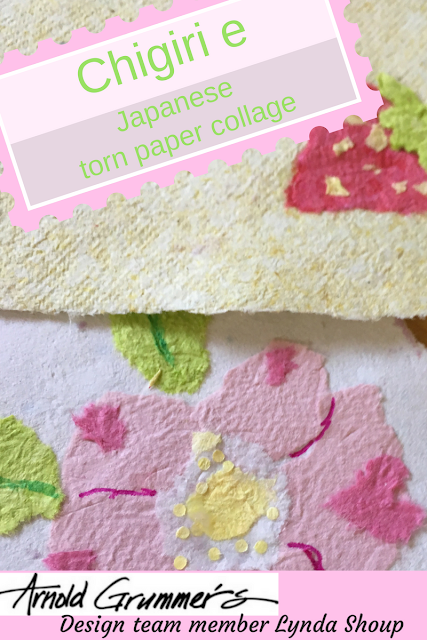Shades of Green
The winter weather here has been pretty brutal this year. Though I normally love the snow and can deal with the cold without much of a problem, I have to say I am getting a bit tired of seeing "white" everywhere for this long. When Spring arrives it will be truly welcomed. Looking forward to the sight of tiny purple and yellow crocus' and the bursts of green everywhere. Green, the color of new life. Here are three cards that I created from a handmade sheet of paper and extra pulp. Shades of green to express "Thanks", Happy St. Patrick's Day and a Celtic note.
The first card above with the Celtic Heart design began with a small square of handmade paper. I used a brass stencil with the design to transfer the image to the paper. Hold the stencil in place tightly. NOTE: It can also be taped down carefully using a low tack masking tape. Using a small foam applicator, ink over the stencil with a dye based green ink. I small amount of Peeled Paint Distress Stickles™was carefully spread by a fine paint brush onto the stenciled image. Carefully tear the four edges of the square. The torn square image is layered onto a light green square, cut with decorative scissors, then layered onto a gold square that was textured with a Sizzix Embossing Folder, finally onto a blank card. NOTE: A length of ribbon with a small tailored bow was added for embellishment.
The second card used two shamrock shapes that were first colored by applying one or two inks. Both are embossed using a Sizzix Embossing Folder. The embossed shapes get one more ink added to the raised areas. The shamrocks are glued onto a gold piece of card stock. These two layers are placed onto a coordinating card stock that is edged using a decorative border punch. The card is finished with a length of "St. Patrick's Day ribbon over the layers after being attached to a blank card.
The final card starts with a piece of handmade paper being stenciled with the word "thanks" using a brass stencil. Both edges are punched with a border punch. NOTE: A piece of waxed paper is folded over the edges before punching the decorative design. The waxed paper helps with this edge punching. This piece is glued onto a gold square that has an embossed design on half the piece and corners rounded, then onto a colored piece of card stock with the two edges cut with the same border punch. Add ribbon onto the three layers (refer to photo), tie a bow and glue the entire piece to a blank card.
NOTE: I used Tim Holtz Distress Inks for the stenciling on two cards and to color the two shamrock shapes.
After making a few sheets of simple plain white paper (one can never have enough of these on hand), I felt like playing around with extra pulp. I made three blender containers of extra pulp. After transferring all the pulp into a different container, I began adding the pulp into two shamrock shaped cookie cutters that act as a deckle. Place chosen deckles onto the white grid and screening to allow the water to drain from the pulp. To add the pulp into the shapes I used an old fashioned baster to collect the pulp and then squeeze into the shapes. I was able to make several shamrock shapes from the pulp. I cut a narrow strip from a sponge and used it to remove as much of the water from the deckle shape before removing it. Once the deckle can be removed follow the steps for more water removal and pressing as you would to create a sheet of paper. NOTE: Refer to the card above where a set of these were used as an embellishment.
The last large shamrock I made was fairly thick and this was done by adding several layers more of pulp. Again I removed as much of the water as possible with the use of the strip of sponge and then continued the process. An iron was used to start the drying process and then left to dry overnight. The thickness of this shape will find its way into a piece I hope to share with you at a later date. Any thoughts of how I will use it?
This is the COUPON CODE: STPAT20 for the month of February. Save some "green", 20%, on an order at the Arnold Grummer website.












Comments
Post a Comment